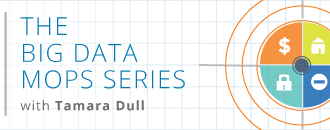The Internet of Things Gets Hyper-Personal
With any new technology, the hype tends to reach unbearable volumes far before anyone can point to tangible business benefits. But when it comes to the IoT, it is quickly becoming a force that affects our everyday lives – albeit we might not be completely aware of it. I am referring to a phenomenon that we are already constantly interacting with, in an almost invisible manner: the Internet of Me (following convention, let’s abbreviate this to IoM).
The Internet of Things Gets Hyper-Personal
With any new technology, the hype tends to reach unbearable volumes far before anyone can point to tangible business benefits. But when it comes to the IoT, it is quickly becoming a force that affects our everyday lives – albeit we might not be completely aware of it. I am referring to a phenomenon that we are already constantly interacting with, in an almost invisible manner: the Internet of Me (following convention, let’s abbreviate this to IoM).
The IoM is internet 3.0: it surrounds us, wraps itself around us in a seamless manner through the intricate network of devices and applications that follow us everywhere we go. It knows where we are, when we got there, how, and where we’re headed next. It knows our needs, our desires, intentions, our permissions, and limitations. And it uses all this information to serve us with actionable information in a zero-click fashion.
Need an example? Think of services such as Google Now, that can recommend routes and parking spaces before you’ve even told it where you want to go; think of the way Facebook serves you exactly the content (and advertising…) you want to see. These companies use powerful hardware and algorithms to crunch the abundance of data which they collect about their users’ online and offline behavior in order to provide a hyper-personalized experience.
NB: this experience is usually not triggered by the users. The IoM doesn’t wait for the user to ask a question; it certainly doesn’t present her with a myriad of graphs and waits for her to reach her own conclusions. It gives her the bottom line – what the data people might call the actionable insight.
If you accept that the IoM, which is powered by deep analysis of both sensor and web data, is indeed a major force in our lives already, and that it will grow more dominant over time, one obvious question is in what ways this will seep into the business world. Will these automated, hyper-personalized insights drive business executives at decision-making crossroads, in the way that a traffic app might direct you to take one route or another at an actual crossroads? I believe that the answer to this is a resounding yes.
Business Intelligence and the IoM
To understand what I mean, let’s think of how business typically interacts with data today. It’s mainly through the stakeholders’ personal computers or mobile devices, they need to login to some specific business intelligence system(s), where they can look at… graphs, which they then need to interpret and translate into action.
There is nothing inherently wrong with this process, and today’s non-analyst business user is typically data-savvy and able to reach an intelligent conclusion based on these charts and graphs. Nevertheless, modern technology presents a broader range of possibilities.
Imagine you’re driving to work and can ask your personal assistant app about your sales targets for the day. Imagine smart lights changing color to reflect the current state of your business objectives – based on numbers that are crunched behind the scenes. Imagine having your questions answered far before you asked them, driving your next decisions based on automated alerts across a variety of devices and platforms.
We’re not there yet – today’s data is consumed mostly in dashboards, and this is still the foremost part of Sisense’s business intelligence solution. But the future lies beyond the dashboard – data insights that happen in your real-life environment. To reference the old cliche’, you’ll be able to “ask the fridge” about your company’s performance, and the fridge will automatically know how to give you the exact answer that’s relevant for you – rather than commissioning a new report from your BI department.
Machine Learning as the Great Enabler
So far we’ve talked about IoT. Where does machine learning fit into this? The simple answer is that everything I’ve described above is made possible, in one way or another, by machine learning.
The obvious way this is manifested is in the usage of machine learning to create these hyper-personalized, seamless experiences, which are based on the aggregated knowledge of user behavior collected in real-time and applying constantly evolving algorithms to both personal and collective data, which is then derived into the single insight or suggestion tailored to meet a specific end user’s needs.
But the other, less obvious way machine learning can facilitate the IoM in the business world, is by giving businesses the power to deliver these experiences, even for companies that don’t have the massive hardware infrastructure or troves of engineers employed by the world’s tech giants.
Sisense employs machine learning as a core element of its In-Chip™ data processing algorithms. Without getting too deep into the technical nitty-gritty (I’ll be doing that at my keynote presentation at Strata), I’d like to explain how this is done to demonstrate the way machine learning can make powerful analytics accessible on modest hardware deployments.
We call it query recycling – breaking queries into smaller blocks that are later reassembled to answer future queries: if user A asks a completely new question such as “what was our average deal size last year?” and user B later asks “what is our year-over-year growth in sales?”, the second user will receive their answer faster – because the system has already performed some of the aggregations needed to answer their question.
This is not mere caching as you would find in traditional OLAP – it is a learning algorithm that grows smarter and more efficient over time and as more unique queries accumulate. It learns to identify the reusable chunks within each query, and to use these as a knowledge base for future reference. And as the system becomes smarter, it becomes faster, allowing it to scale horizontally and serve more concurrent users – on the exact same hardware. Rather than increasing latency, the additional users and queries contribute to the knowledge graph; and so, almost paradoxically, Sisense performs better as the amount of users grows. The additional computational resources are offset by the fact that the engine has so many more queries to “recycle”.
This is part of what enables Sisense to crunch really big datasets on completely regular hardware – for example, a terabyte of data on a single node in 10 seconds, as was seen in a previous Strata conference.
Thus machine learning can be used as a back-end technology that empowers today’s businesses and gives them the ability to process massive, complex data with the speed and agility needed to power an IoM-like system – on standard hardware and with a handful of business analysts, rather than an army of clusters and data scientists.
Closing
This combination of smart devices, learning algorithms, and the ability to produce and deliver insights in a way that’s simpler and more intuitive than ever before – presents mind-boggling possibilities for tomorrow’s data-driven business. As in many other areas of tech that are being rapidly disrupted – the future is exciting, and I for one can’t wait to be a part of it.








